#Nagaokakyo
Text

1 note
·
View note
Photo

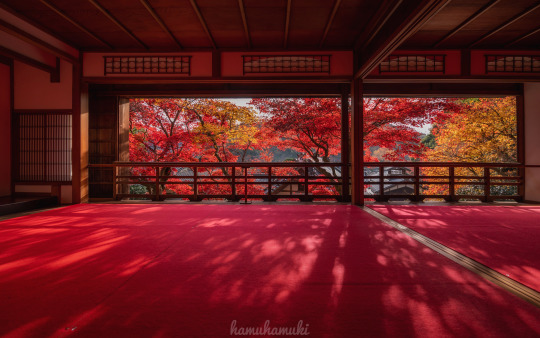
Yanagidani Kannon (Yokokuji Temple) is located in Nagaokakyo City, not far from Kyoto City. Photography by Hamuki Takezawa
291 notes
·
View notes
Text

今日は月曜ですが「しめかざりの会」を行なっていますので店は開けています。写真は、伊勢「蘇民将来子孫家門」。こちらは小。大も有ります。
蘇民将来については長岡京(784-794)跡から「蘇民将来之子孫者」と記された小さな木簡が出土するなど、古くから厄除けとして信仰されていたようです。京都・祇園祭の際に授与される粽や茅之輪守にも記されています。
鎌倉時代に卜部兼方が記した書物『釈日本紀』には、奈良時代に記された『備後国風土記』の逸文として、「後世爾疫氣在者 汝蘇民將來之子孫止云天 以茅輪着腰在人者 將免止詔伎(のちの世に疾気=疫病あらば、汝、蘇民将来の子孫と云ひて、茅の輪をもちて腰に着けたる人は免れなむ)」と記されています。まだまだ疫病の季節、どうぞお気をつけください。
参考:長岡京市埋蔵文化財センター http://nagaokakyo-maibun.or.jp/sominnsyourai1.html
15 notes
·
View notes
Text

Nagaoka-Tenmangū in Nagaokakyo
Nagaoka Tenmangu is a shrine in Nagaokakyo City, Kyoto Prefecture, not far from Kyoto City and close to Uji—the region of Kyoto famous for matcha green tea—and the famous Otokuni Bamboo grove.
The entrance path to the main hall is lined with hedges of approximately 150-year-old Kirishima azalea trees, which bear distinctive dark red flowers which will be in full bloom beginning in late April, when they create an azalea tunnel.
30 notes
·
View notes
Text
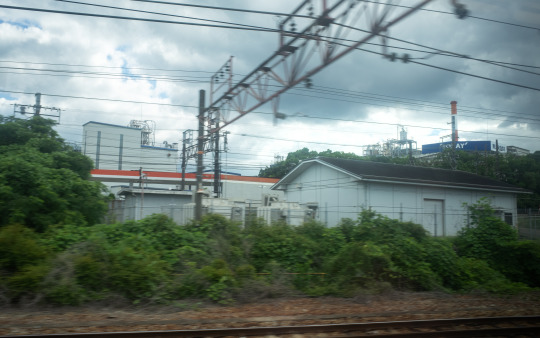

普通列車でどこかへ #53
琵琶湖線快速 網干行
京都府 長岡京市のあたり
Amazon Japan Kindle 新井ワタルのページ
https://www.amazon.co.jp/新井ワタル/e/B0168GDX1M/
Go somewhere by local train #53
Biwako Line rapid train bound for Aboshi
Around Nagaokakyo, Kyoto
Amazon USA Kindle Watal Arai's Page
https://www.amazon.com/WATAL-ARAI/e/B01BODI7I8
4 notes
·
View notes
Text
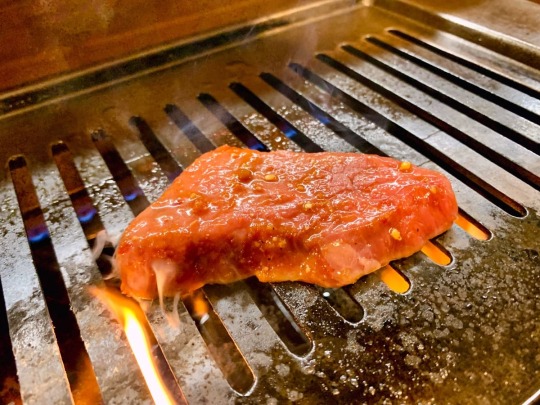
One autumn weekend, after work, I felt like having yakiniku (BBQ) by myself for the first time in a while… so I went to “Kyo no Yakinikudokoro Hiro Senbon Sanjo Honten,” a restaurant so famous that no one in Kyoto City knows about it. I had not made a reservation in advance, but according to the official information, the restaurant has 98 seats, so I figured there would be plenty of room…. However, when I went there around 6:30 in the evening, I found that there was no room at all, and the waiter told me, “We can take reservations after 9 p.m., but…”. I was told by the clerk, “We can make an appointment after 9:00 p.m.” As expected, the two-and-a-half hour wait time was hard to bear…
Then it occurred to me that the restaurant I am going to introduce here is called “Daisho-en Yakiniku Restaurant. It seems to be under the direct management of “Niku no Daisho,” a butcher store in Nagaokakyo City, and although it is still a new store, established in July 2019, it is a popular restaurant in Kyoto with a growing reputation as a “yakiniku specialty restaurant where real meat lovers gather”. I called the restaurant immediately and was told that the counter seats were a bit cramped, but I was lucky enough to get a reservation, so I immediately left the Kyoto Sanjo-kai Shopping Arcade and headed for Hanazono Station, two stops away from JR Nijo Station….
Continue reading... >> Daisho-en
0 notes
Text
History of Kyoto
On October 22, 794 (Enryaku 13), Emperor Kanmu left Nagaokakyo, where he had lived for 10 years (currently Muko City, Nagaokakyo City, Kyoto Prefecture, etc.), and moved to a new capital under construction in the center of the basin to the northeast. It has entered. Rectangular, measuring about 4.5 kilometers from east to west and about 5.2 kilometers from north to south, it housed government offices (Daidairi), and the emperor's residence (Dairi) in the center. From there, Suzaku-oji (now Senbon-dori) ran straight through to Rajomon, the gateway to the south. was designated as "Heiankyo". Until then, the capital had only lived for ten to several decades at most, but Heian-kyo and its successor, Kyoto, continued to be the capital of Japan for over a thousand years. A city that has maintained its position as the center of a single civilization for such a long period of time is rare in the world. It must be said that Kyoto is Japan's "eternal capital".
The city was built in a planned manner, like Gobanme, but Ukyo was very wet and difficult for people to live in, so people moved to Sakyo. Therefore, the development of the eastern part of Kyoto progressed.
During the Heian period, the aristocrats known as the Fujiwara clan wielded great power. They married their daughters to the emperor and became relatives of the emperor. The Fujiwara clan rose to the position of 'regent' or 'chief adviser' to help the emperor in the administration of politics, and expanded their power.
At the end of the Heian period, samurai became more powerful than nobles, and the Taira clan grew in power. It had the greatest power in the era of Taira no Kiyomori, but after Kiyomori died, the Taira clan was defeated by the Genji clan, and Minamoto no Yoritomo opened the Kamakura shogunate.
After surviving the Jisho-Juei Civil War, commonly known as the "Genpei War", we will enter the era of a full-fledged samurai government. Even though the Kamakura shogunate was established in the eastern part of Japan, the Kyoto Imperial Court still held power, and Kyoto was the largest mega-city in Japan. Even in the Kamakura period, Kyoto never lost its importance.
After the Kamakura shogunate was destroyed by Takauji Ashikaga, the Muromachi shogunate was established and the shogun established the shogunate in Kyoto.
The Kinkaku-ji temple, which was built in this period, represents the gorgeous Kitayama culture, while the Ginkaku-ji temple represents the simple and tasteful Higashiyama culture.
Kyoto regained its position as Japan's sole political center. Purely Japanese culture flourished in Kyoto, such as the Kitayama culture led by the 3rd shogun Ashikaga Yoshimitsu, and the Higashiyama culture led by the 8th shogun Yoshimasa. Yoshimitsu's residence, Kitayamaden, and Yoshimasa's villa, Higashiyamaden, were later converted into temples. This is Rokuonji and Jishoji, commonly known as "Kinkakuji" or "Ginkakuji".
In addition, the city of Kyoto was divided into Kamigyo and Shimogyo. In Kamigyo, there was the Imperial Palace (the residence of the emperor) and the shogunate, and in Shimogyo, the city was built mainly by commerce and industry (people who do business and make things).
In the first year of Onin (1467), the Onin War broke out as a result of the battle between the Shoguns of the Muromachi Shogunate. This was a big battle that turned most of Kyoto into a burnt wasteland and lasted for 11 years.
As the power of the Muromachi shogunate weakened, Japan entered the turbulent times of the long Sengoku period. Politically, the Sengoku daimyo (feudal lords of the Sengoku period) were in power in various places during this period, but the culture of Kyoto was still the object of their admiration. The fact that Takeda Shingen, who was based in Kai and was a prominent figure in the eastern part of Japan, took the trouble to invite only his wife from an aristocratic family in Kyoto, which is the most obvious example of this. Nobunaga Oda, who aimed to unify the world, first aimed at Kyoto because he ruled Kyoto, which led to the rule of the world.
After Nobunaga Oda committed suicide after being betrayed by Mitsuhide Akechi, Hideyoshi Toyotomi unified the world.
Hideyoshi built Fushimi Castle and a magnificent building called 'Jurakudai' covered with gold leaf.
With the establishment of the Edo Shogunate by Ieyasu Tokugawa, Kyoto lost its position as the center of politics. But even so, Kyoto remained the cultural and industrial center of the nation. In particular, high-class products such as Nishijin textiles were produced one after another from Kyoto's industries, and were shipped all over the country. Along with Edo, the political capital, and Osaka, the commercial capital, Kyoto was known as one of the “Three Capitals” and continued to prosper. At that time, it is said that Edo grew into a metropolis with a population of 1 million, Osaka with a population of 500,000, and Kyoto with a population of 400,000. The next largest cities were Nagoya and Kanazawa, where over 100,000 people lived, and even the castle towns of large feudal domains had populations of tens of thousands. I was doing it.
However, at the end of the Edo period (the end of the Edo Shogunate), the Sabaku faction (those who wanted to protect the Shogunate) and the Sonno faction (those who aimed for emperor-centered politics) were in conflict.
For a long period of 300 years, early-modern Japan was peacefully governed, but the system of the Edo shogunate collapsed due to pressure from the Western powers. National opinion is completely divided into two over whether to open the country or to expel foreigners (the idea of excluding foreigners). In the midst of this, the great foreign domains such as Choshu and Satsuma, which had increased their degree of independence, and the shogunate itself, whose foundations were beginning to wobble, increased their power by assuming the traditional authority of the emperor of Kyoto. You will be able to maintain it. As a result, Kyoto was once again reinstated as a political city. In the last few years of the Tokugawa shogunate, the shogun often stayed in Kyoto, and the Tokugawa government even took on the appearance of the 'Kyoto shogunate'. The feudal domains that were in conflict with the shogunate also used Kyoto as the stage for various political maneuvers. Ryoma Sakamoto of Tosa, Kogoro Katsura (later Takayoshi Kido) of Choshu, Takamori Saigo of Satsuma, and the Shinsengumi, who were determined to protect the shogunate, were active around this time.
In 1867, the shogunate returned the right to govern the country to the Imperial Court (this is called Taisei Hokan).
The new government army and the former shogunate army fought fiercely in Toba and Fushimi, Kyoto, and the new government army won, and in 1869, the capital of Japan was moved from Kyoto to Tokyo. People worried that the city of Kyoto would become lonely proceeded with modernization one after another in order to restore vitality.
One example is the construction of a canal to draw water from Lake Biwa to Kyoto. 21-year-old Sakuro Tanabe overcame many difficulties to make it a reality. Thanks to this, abundant water was brought in, hydroelectric power generation became possible, and Japan's first streetcar was realized.
Before long, the Edo Shogunate was overthrown, and the Meiji Restoration government, centered on the emperor, was born. It seemed that Kyoto would return to being the “capital” again. However, Emperor Meiji changed Edo to "Tokyo" and moved there. In effect, the transfer of the capital to Tokyo took place. Kyoto was hit hard by this, and it is said that the population, which numbered over 300,000, dropped to over 200,000.
However, Kyoto repelled this crisis admirably. Under strong leaders such as Masanao Makimura, the second governor, and Kunimichi Kitagaki, the third governor, Japan's first elementary school was established, the Kyoto Exposition was held, and Lake Biwa was established. Kyoto was one of the first cities in Japan to carry out new attempts one after another, such as the construction of the canal, the accompanying hydroelectric power generation, the operation of streetcars, and the construction of modern buildings made of red bricks. As a result, Kyoto has been reborn as a splendid modern city, giving off a new brilliance as one of Japan's leading cities.
During the Pacific War (World War II), Kyoto hardly survived the air raids, and as a result, many of the precious cultural assets were left unharmed at the end of the war. Kyoto currently has a population of approximately 1.47 million. It is the 8th largest city in Japan (2015 population census), and is a city that symbolizes traditional Japanese culture.
0 notes
Photo
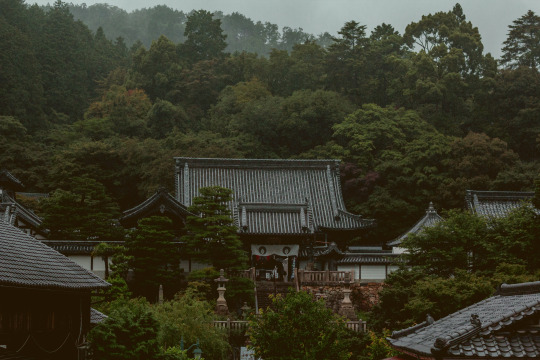




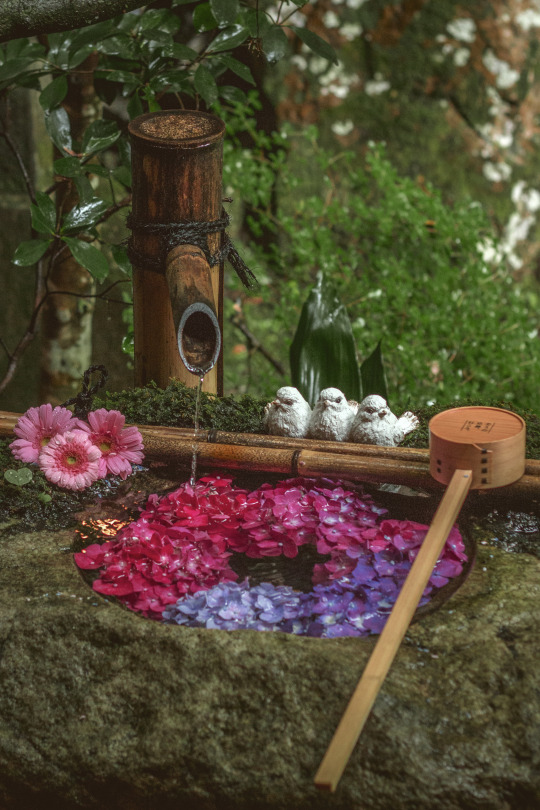


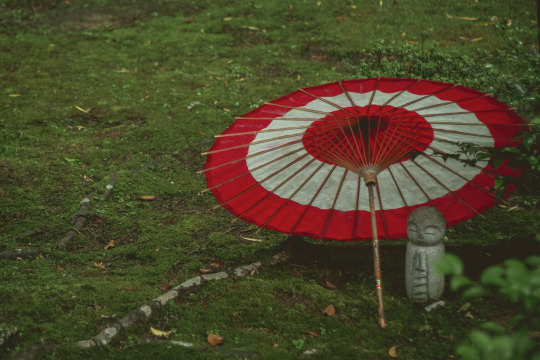

楊谷寺 Yokoku-ji
📍 Nagaokakyo, Kyoto
#flowers#nature#green#pink#purple#blue#water#rain#rainy#dragon#japanese#torii#torii gate#red#mountain#japan#kyoto#Nagaokakyo#umbrella#wagasa#grass#garden#japanese garden#photography#photographer#original photography blog#original photographers on tumblr#original photographer#ajisai#hydrangea
350 notes
·
View notes
Text

光明寺 (長岡京市)
#Nagaokakyo#Japan#🇯🇵#BeautifulDestinations#Autumn#AutumnColors#AutumnLeaves#Beautiful#Calming#Escape#Explore#ExploreJapan#Getaway#Landscape#Nature#Peaceful#Scenery#Serene#Sunrise#Travel#Travel Japan#TraveltheWorld#VisitJapan
9 notes
·
View notes
Photo
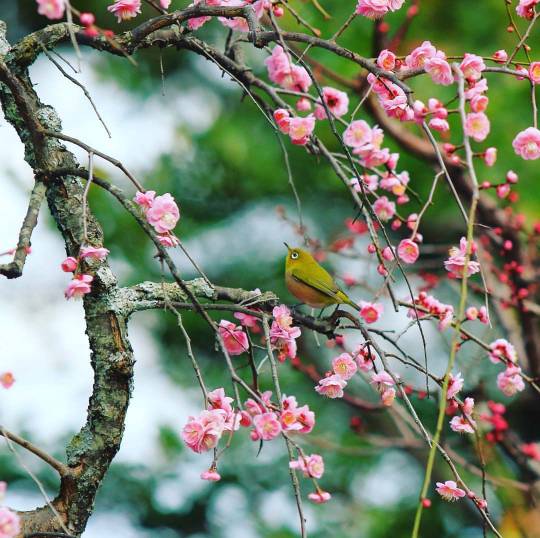
#枝垂れ梅 と#メジロ 。 15日、#長岡天満宮 にて。 . 枝垂梅和暗綠繡眼鳥(日文叫「めじろ=mejiro=目白」。 在日本的二月、一雙鳥告訴春天。 . #japan #bird #flowers #plum #canon #eos7dmark2 (+EF 70-200mm F2.8 L USM) #canonphotography #my_eos_photo #february #kyoto #nagaokakyo #shrine #team_jp_ #ig_japan #学中文 #鳥 #梅 #春天 #ぼにすま #はなまっぷ #一眼レフ #カメラ散歩倶楽部 #旅人の交換日記 #長岡京 #京都 #東京カメラ部 #写真好きな人と繋がりたい (長岡天満宮) https://www.instagram.com/p/B8moum4guB9/?igshid=thnis6yj1l52
#枝垂れ梅#メジロ#長岡天満宮#japan#bird#flowers#plum#canon#eos7dmark2#canonphotography#my_eos_photo#february#kyoto#nagaokakyo#shrine#team_jp_#ig_japan#学中文#鳥#梅#春天#ぼにすま#はなまっぷ#一眼レフ#カメラ散歩倶楽部#旅人の交換日記#長岡京#京都#東京カメラ部#写真好きな人と繋がりたい
2 notes
·
View notes
Photo

日曜日のHealing #jetmasa #じぇっとまさ #京都府 #長岡京市 #西代里山公園 #竹の道 #癒し #japan #kyoto #nagaokakyo #park #sunday #healing #iphone7plus #instagram (西代里山公園) https://www.instagram.com/p/CZVtlCxvSH0/?utm_medium=tumblr
#jetmasa#じぇっとまさ#京都府#長岡京市#西代里山公園#竹の道#癒し#japan#kyoto#nagaokakyo#park#sunday#healing#iphone7plus#instagram
0 notes
Photo

Komyo-ji Temple. This temple is the head temple of the Nishiyama Jodo sect. It is located in Aohirodani, at the foot of Nishiyama, Nagaokakyo City, Kyoto Prefecture. It is the place where the Rikkyo sect was founded, where Enko Daishi Honen, the founder of the sect, was the first in Japan to give birth to the nembutsu "Namu Amidabutsu" when he was 43 years old (1175).
99 notes
·
View notes
Video
Azalea Kirishima of Nagaoka Tenman-gu shrine. #nagaokatenmangu #nagaokakyo #kyoto
3 notes
·
View notes
Photo

The red river symbolizes anger and hatred, the black river represents worldly temptations, by walking along the white path one could lead to Amida's Pure Land. White Path to Paradise between Two Rivers of Worldly Vice, 13th century, Komyoji, Nagaokakyo, Kyoto. #whitepath #redriver #blackriver #amida #amitabha #zendo #buddhism #pureland #pathtoparadise #komyoji #nagaokakyo #kyoto #japanart #colorlove
#pureland#japanart#zendo#blackriver#pathtoparadise#redriver#amida#kyoto#buddhism#nagaokakyo#komyoji#colorlove#whitepath#amitabha
1 note
·
View note
Photo
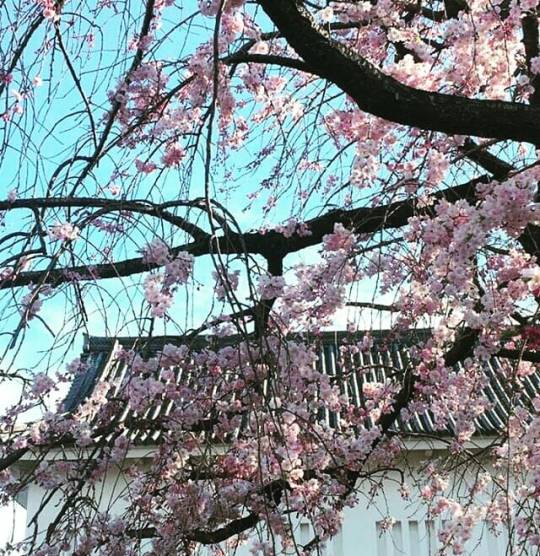
The Shoryuji castle🏯 in Nagaokakyo and the cherry blossoms🌸 #cherryblossom #blossom #sakura #nagaokakyo #kansai #spring #springjapan #japan #japanlove #instajapan #picoftheday #lifeinjapan #japanculture #giappone #ilovejapan #japanese #kyoto #kyotolover #japantrip (presso Nagaokakyo-shi, Kyoto, Japan) https://www.instagram.com/p/Bv_yEyHD0w3/?utm_source=ig_tumblr_share&igshid=1702jsa1dbnd7
#cherryblossom#blossom#sakura#nagaokakyo#kansai#spring#springjapan#japan#japanlove#instajapan#picoftheday#lifeinjapan#japanculture#giappone#ilovejapan#japanese#kyoto#kyotolover#japantrip
0 notes
Photo
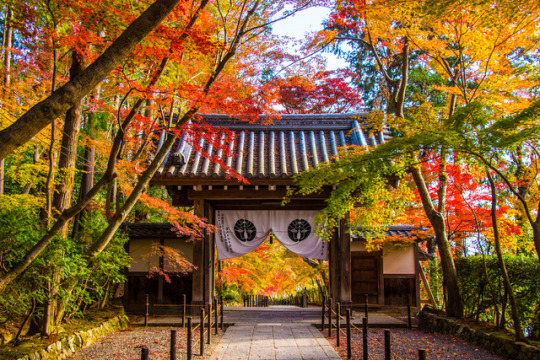
All clear by Johnshlau
Nagaokakyo-shi, Kyoto, Japan
125 notes
·
View notes